Ælfgif-who? provides short biographies of early medieval English women every two weeks. Click on the podcast player if you’d like to hear this newsletter read aloud in my appealing Yorkshire accent.

Æthelgifu and Ælfgifu: A Mother and Daughter Embroiled in a Medieval Sex Scandal
The Life of Saint Dunstan, written in around 1000, describes a scandalous incident that took place at the coronation of King Eadwig in 956.
According to the anonymous author of this saint’s life, the teenage Eadwig suddenly rushed out of his coronation ceremony after he had been anointed and crowned. Archbishop Oda ordered for Eadwig to be found, and he was discovered by Abbot Dunstan cavorting with two women, a mother and her adult daughter, ‘as if they were wallowing in a revolting pigsty’. His crown had been tossed on the ground, and after Dunstan had told the women off, he picked up the crown and placed it back on Eadwig’s head, and marched him back to his coronation feast.
The text names the mother as the noblewoman Æthelgifu, and says that she and her daughter sought for the king to marry one of them. Comparing her to Jezebel, it says that after the incident at the coronation ceremony, Æthelgifu worked against Abbot Dunstan, using her influence with the king to get him sent into exile.
From charter evidence, we know that in 956 Eadwig was married to a woman named Ælfgifu, whose mother was a noblewoman called Æthelgifu. We might therefore infer from this Saint’s Life that it was these women who are accused of having a ménage à trois with Eadwig at his coronation. Although this story is amusingly scandalous, it is worth exploring what motives there might be to embroil King Eadwig and these women in scandal decades later.
In the last edition of Ælfgif-who, we looked at Eadgifu, a dowager queen and King Eadwig’s grandmother, who was close to Dunstan and who was dispossessed of her land and wealth by the king at the same time as Dunstan was exiled. After Eadwig died in 959 his younger brother Edgar restored the positions of both his grandmother Eadgifu and Abbot Dunstan.
From these events, it seems clear that two rival factions existed: supporters of Eadwig, and supporters of Edgar. Edgar went on to reign until 975, and during this time Dunstan was promoted to bishop and then archbishop, his influence in ecclesiastical politics leading to his sainthood. It is easy to imagine that during Edgar’s reign a substantial rewriting of history took place that maligned the losing faction, and led to a story being constructed that glorifies Dunstan as the hero, as he chastises the debauched women and sends the shameful king back to face his nobles and clergy. Ælfgifu and Æthelgifu have thus been vilified in the historical record, becoming maligned symbols for Eadwig’s immorality and Dunstan’s saintliness.
This retrospective rewriting of history during Edgar’s reign makes it difficult to write the biographies of either Ælfgifu or her mother Æthelgifu. Little is known of their background, though Eadwig’s marriage to Ælfgifu before his coronation may indicate that she came from a powerful family that helped him secure power. That she is associated with her mother Æthelgifu in the sources, as opposed to her father, indicates that this influence was from her maternal family. In 958, Archbishop Oda dissolved the marriage of Eadwig and Ælfgifu, on the grounds of consanguinity - being blood related. This may have been a distant relation that was leveraged to dissolve the marriage during a time in which power was moving in favour of Eadwig’s brother and rival Edgar, who was accepted as king of Mercia in this year. It seems Ælfgifu was exiled for short time at this point, indicating her capacity to be a political problem.
She seems to have returned to England by the 960s and her name was included in the 966 New Minster Winchester refoundation charter. Between 966 and 975 Ælfgifu died and left a will. This will leaves a large amount of land to the king, and it is unknown if this was her own land inherited from her family or land she was given while queen. The Death Duty paid to the king on her death was the largest of any surviving tenth-century will. She was buried at Winchester alongside her former husband Eadwig.
The noblewoman Æthelgifu and her daughter, Queen Ælfgifu, are two of many examples of influential women who ended up on the wrong side of history. Dunstan’s hagiographer reduced these two powerful women to sexual objects that exist purely to reflect the morality of the men around them. Paradoxically, that they were so diminished in this misogynistic anecdote of sexual debauchery only speaks to their actual influence and the threat they once posed.
Suggestions for further reading:

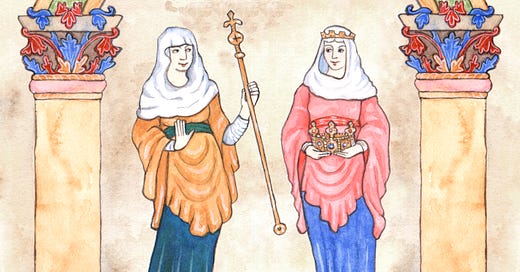





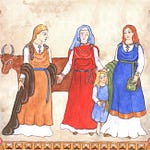
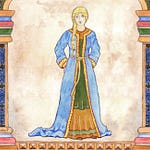
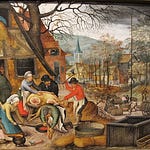
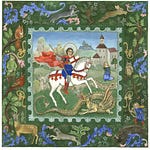



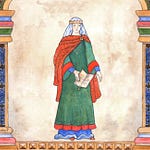
Share this post